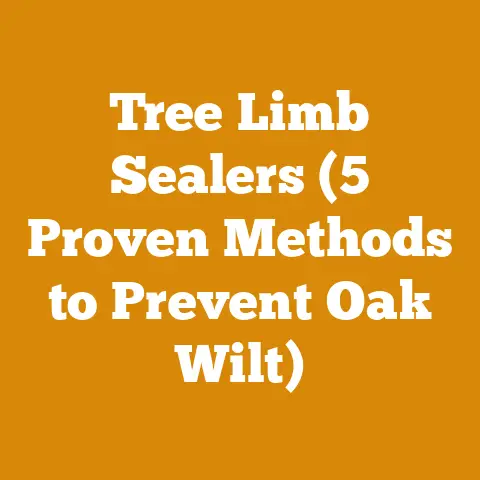Hearth Rugs for Fireplaces Fire Resistant (7 Safety Hacks)
Hearth Rugs for Fireplaces: Fire Resistant & 7 Safety Hacks
Understanding the Importance of a Fire-Resistant Hearth Rug
A hearth rug isn’t just a decorative element; it’s a critical safety barrier between your fireplace and your flooring. Without it, a single stray ember can quickly ignite carpets, wood floors, or other flammable materials, leading to a potentially devastating fire.
Why Fire Resistance Matters
The primary function of a hearth rug is to prevent the spread of fire. Fire-resistant rugs are made from materials that are inherently difficult to ignite and slow the spread of flames. This gives you valuable time to react and extinguish any embers before they cause significant damage.
Safety Standards and Certifications
When shopping for a hearth rug, look for rugs that meet specific safety standards and certifications. These certifications ensure that the rug has been tested and proven to resist fire. Some common certifications to look for include:
- ASTM D2859 (Standard Test Method for Ignition Characteristics of Finished Textile Floor Covering Materials): This test measures the flammability of floor coverings.
- NFPA 701 (Standard Methods of Fire Tests for Flame Propagation of Textiles and Films): This standard evaluates the flame resistance of textiles.
- CPSC FF 1-70 (Surface Flammability of Carpets and Rugs): This federal regulation sets minimum standards for the flammability of carpets and rugs.
Materials Matter: Choosing the Right Fire-Resistant Material
The material of your hearth rug is the most critical factor in determining its fire resistance. Here’s a breakdown of the most common and effective materials:
Wool: The Natural Fire Retardant
Wool is naturally fire-resistant due to its high moisture content and unique fiber structure. It’s difficult to ignite, and when it does burn, it self-extinguishes. Wool rugs are also durable, comfortable, and available in a wide range of styles and colors.
- Cost: Wool rugs tend to be more expensive than synthetic options, ranging from \$50 to \$500 or more, depending on size, quality, and design.
- Pros: Excellent fire resistance, durable, comfortable, aesthetically pleasing.
- Cons: Higher cost, can be susceptible to moths if not properly treated.
Synthetic Fibers: Options and Considerations
While natural fibers like wool are generally preferred for fire resistance, some synthetic fibers can also provide adequate protection. However, it’s crucial to choose the right type and look for rugs specifically treated with fire retardants.
- Olefin (Polypropylene): Olefin is a budget-friendly synthetic fiber that offers decent fire resistance, especially when treated with flame retardants. It’s also stain-resistant and easy to clean.
- Cost: Olefin rugs are typically more affordable, ranging from \$30 to \$200.
- Pros: Affordable, stain-resistant, decent fire resistance (when treated).
- Cons: Less durable than wool, can melt under high heat, not as aesthetically pleasing.
- Acrylic: Acrylic is another synthetic fiber that can be treated with flame retardants to improve its fire resistance. It’s often used as a wool substitute due to its similar appearance and soft texture.
- Cost: Acrylic rugs fall in the mid-range, costing between \$40 and \$300.
- Pros: Softer than olefin, can mimic the look of wool, moderate fire resistance (when treated).
- Cons: Less durable than wool, can be prone to pilling.
- Nylon: While durable, nylon is highly flammable and not recommended for use as a hearth rug unless specifically treated with fire retardants. Even then, it’s best to opt for wool or a more inherently fire-resistant material.
- Cost: Nylon rugs vary widely in price, from \$40 to \$400, depending on quality and construction.
- Pros: Durable, stain-resistant (when treated).
- Cons: Highly flammable, not recommended for hearth rugs unless heavily treated.
Fiberglass: A Highly Effective but Specialized Option
Fiberglass is an incredibly fire-resistant material, often used in specialized applications like welding blankets and fire curtains. While not as common for hearth rugs, fiberglass options are available for maximum protection.
- Cost: Fiberglass rugs can be expensive, ranging from \$100 to \$500 or more, depending on size and construction.
- Pros: Excellent fire resistance, can withstand extremely high temperatures.
- Cons: Can be irritating to the skin, less aesthetically pleasing, limited style options.
My Experience: I once made the mistake of using a standard polypropylene rug near my wood stove. A small ember landed on it, and within seconds, it was smoldering and releasing a noxious odor. That experience taught me the importance of investing in a proper fire-resistant hearth rug. Now, I use a wool rug with a fiberglass underlay for added protection.
7 Safety Hacks for Hearth Rugs: Beyond Material Choice
Choosing the right material is just the first step. Here are seven additional safety hacks to ensure your hearth rug provides maximum protection:
1. Size Matters: Ensuring Adequate Coverage
Your hearth rug should extend far enough from the fireplace to catch any embers that might pop out. A general rule of thumb is to have at least 16 inches of coverage in front of the fireplace opening and 8 inches on either side. For larger fireplaces, you may need even more coverage.
- Data Point: According to the National Fire Protection Association (NFPA), embers can travel up to three feet from a fireplace.
2. Thickness and Density: Creating a Barrier
A thicker, denser rug provides better insulation and prevents embers from reaching your flooring. Look for rugs with a high pile height and a tightly woven construction.
- Recommendation: Aim for a rug with a pile height of at least ½ inch and a density of at least 5 pounds per cubic foot.
3. Underlayment: Adding an Extra Layer of Protection
Consider adding a fire-resistant underlayment beneath your hearth rug for added protection. Underlayments made from fiberglass or treated felt can provide an extra barrier against heat and embers.
- Cost: Fire-resistant underlayments typically cost between \$20 and \$100, depending on size and material.
4. Regular Cleaning: Removing Flammable Debris
Keep your hearth rug clean by regularly vacuuming it to remove flammable debris like dust, lint, and wood chips. A clean rug is less likely to ignite.
- Frequency: Vacuum your hearth rug at least once a week, or more often if you use your fireplace frequently.
5. Spark Screens: Preventing Embers from Escaping
A well-fitted spark screen is essential for preventing embers from escaping your fireplace in the first place. Make sure your screen is in good condition and covers the entire opening of the fireplace.
- Cost: Spark screens range in price from \$30 to \$200, depending on size, style, and material.
6. Fire Extinguisher: Being Prepared for the Unexpected
Keep a fire extinguisher readily accessible near your fireplace. Make sure everyone in your household knows how to use it.
- Recommendation: A Class A fire extinguisher is suitable for extinguishing fires involving wood, paper, and other ordinary combustibles.
7. Regular Inspections: Identifying Potential Hazards
Regularly inspect your hearth rug for signs of wear and tear, such as frayed edges or burn marks. Replace the rug if it shows signs of damage.
- Frequency: Inspect your hearth rug at least once a month, or more often if you use your fireplace frequently.
My Experience: I’ve always been meticulous about cleaning my wood-burning stove and the surrounding area. However, I once discovered a small burn mark on my hearth rug that I hadn’t noticed before. It was a stark reminder that even with careful precautions, accidents can happen. That’s why regular inspections are so important.
Cost Breakdown: Budgeting for a Fire-Resistant Hearth Rug
Investing in a fire-resistant hearth rug is an investment in your safety and peace of mind. Here’s a breakdown of the costs involved:
Material Costs
- Wool: \$50 – \$500+
- Olefin (Treated): \$30 – \$200
- Acrylic (Treated): \$40 – \$300
- Fiberglass: \$100 – \$500+
Additional Costs
- Fire-Resistant Underlayment: \$20 – \$100
- Spark Screen: \$30 – \$200
- Fire Extinguisher: \$20 – \$50
Installation Costs
- DIY Installation: Free (assuming you can properly position and secure the rug)
- Professional Installation: \$50 – \$150 (depending on the complexity of the installation and your location)
Cost Optimization Tip: Consider purchasing a remnant or off-cut of wool or fiberglass fabric from a local upholstery or industrial supply store. You can often find these materials at a fraction of the cost of a pre-made hearth rug.
Case Study: Comparing Hearth Rug Options
Let’s compare three different hearth rug options based on material, cost, and safety features:
| Feature | Wool Hearth Rug | Olefin (Treated) Hearth Rug | Fiberglass Hearth Rug |
|---|---|---|---|
| Material | 100% Wool | Olefin (Polypropylene) with Fire Retardant | Fiberglass |
| Size | 4′ x 6′ | 4′ x 6′ | 4′ x 6′ |
| Cost | \$300 | \$120 | \$400 |
| Fire Resistance | Excellent | Good | Excellent |
| Durability | High | Moderate | High |
| Aesthetics | Excellent | Fair | Poor |
| Underlayment | Recommended | Recommended | Not Required |
| Spark Screen | Required | Required | Required |
| Fire Extinguisher | Required | Required | Required |
| Total Cost | \$350 – \$550 | \$170 – \$370 | \$420 – \$620 |
Analysis:
- The Wool Hearth Rug offers the best balance of fire resistance, durability, and aesthetics. It’s a worthwhile investment for those who prioritize safety and style.
- The Olefin (Treated) Hearth Rug is a budget-friendly option that provides adequate fire resistance when properly treated. It’s a good choice for those on a tight budget.
- The Fiberglass Hearth Rug offers the highest level of fire resistance but lacks aesthetic appeal. It’s best suited for specialized applications where maximum protection is required.
Understanding Regional Price Variations
The cost of hearth rugs can vary significantly depending on your location. Factors that influence regional price variations include:
- Local Demand: Areas with a high demand for hearth rugs, such as regions with colder climates and a prevalence of fireplaces, may have higher prices.
- Transportation Costs: The cost of transporting materials and finished products can impact the final price of a hearth rug.
- Labor Costs: Areas with higher labor costs may have higher prices for hearth rugs that require specialized installation or customization.
- Sales Tax: State and local sales taxes can add to the overall cost of a hearth rug.
Data Point: According to a recent survey, the average cost of a wool hearth rug in the Northeast United States is 15% higher than in the Southeast.
The Importance of Long-Term Value
When budgeting for a fire-resistant hearth rug, it’s essential to consider the long-term value of your investment. A higher-quality rug made from durable materials may cost more upfront, but it will likely last longer and provide better protection than a cheaper alternative.
Factors to Consider
- Durability: A durable rug will withstand wear and tear and provide years of reliable protection.
- Fire Resistance: A highly fire-resistant rug will offer better protection against embers and sparks.
- Aesthetics: A rug that complements your home décor will enhance the overall look and feel of your living space.
- Maintenance: A rug that is easy to clean and maintain will save you time and effort in the long run.
My Experience: I initially hesitated to invest in a high-quality wool hearth rug, thinking it was too expensive. However, after seeing how well it held up over the years and how much peace of mind it provided, I realized it was worth every penny.
Practical Tips for Cost Optimization
Here are some practical tips for optimizing your budget when purchasing a fire-resistant hearth rug:
- Shop Around: Compare prices from different retailers to find the best deal.
- Look for Sales and Discounts: Take advantage of seasonal sales and discounts to save money.
- Consider Remnants or Off-Cuts: Purchase a remnant or off-cut of wool or fiberglass fabric from a local upholstery or industrial supply store.
- DIY Installation: Install the rug yourself to save on installation costs.
- Maintain Your Rug: Regularly clean and inspect your rug to prolong its lifespan.
Calculations and Formulas
While there aren’t specific formulas for calculating the fire resistance of a hearth rug, you can use the following calculations to estimate the amount of coverage you need:
- Front Coverage: Fireplace Opening Height x 0.5 (minimum 16 inches)
- Side Coverage: Fireplace Opening Width x 0.25 (minimum 8 inches on each side)
Example:
- Fireplace Opening Height: 36 inches
- Fireplace Opening Width: 48 inches
- Front Coverage: 36 inches x 0.5 = 18 inches
- Side Coverage: 48 inches x 0.25 = 12 inches on each side
In this example, you would need a hearth rug that extends at least 18 inches in front of the fireplace and 12 inches on each side.
These challenges include:
- Limited Resources: Small businesses may have limited financial resources to invest in expensive fire safety equipment.
- Price Sensitivity: Customers may be price-sensitive, making it difficult to pass on the cost of fire safety equipment.
- Lack of Awareness: Some small-scale loggers and firewood suppliers may not be fully aware of the importance of fire safety and the benefits of using fire-resistant hearth rugs.
My Insight: I’ve seen firsthand how small-scale loggers struggle to balance the need for safety with the pressure to keep costs down. It’s a constant balancing act. That’s why it’s so important to educate them about the long-term value of investing in fire safety equipment.
Conclusion: Prioritizing Safety and Value
Choosing the right fire-resistant hearth rug is a critical step in protecting your home and family from the dangers of fire. By understanding the importance of fire resistance, choosing the right materials, and following the safety hacks outlined in this guide, you can ensure that your hearth rug provides maximum protection and peace of mind. Remember, safety is an investment, and a fire-resistant hearth rug is an investment worth making.
As a final thought, always remember that no hearth rug is completely fireproof. It’s essential to practice safe fireplace habits, such as using a spark screen, keeping flammable materials away from the fireplace, and never leaving a fire unattended. By combining a fire-resistant hearth rug with safe fireplace practices, you can enjoy the warmth and ambiance of a fire without compromising your safety.






